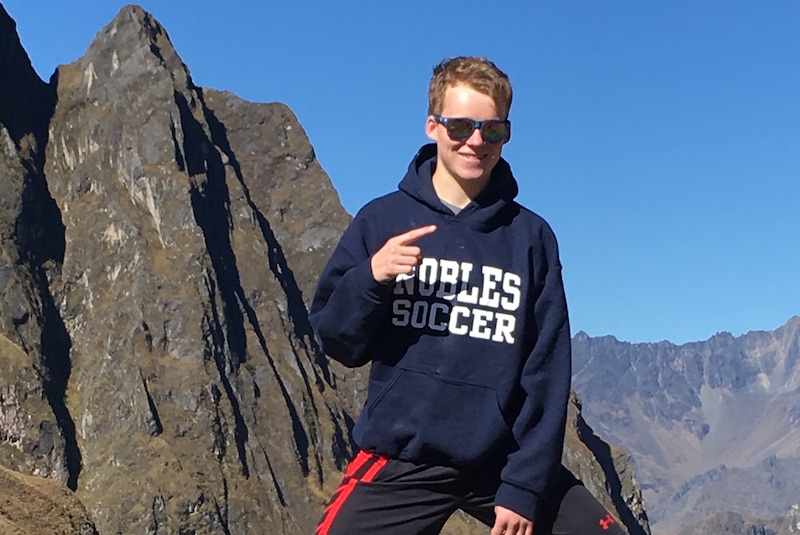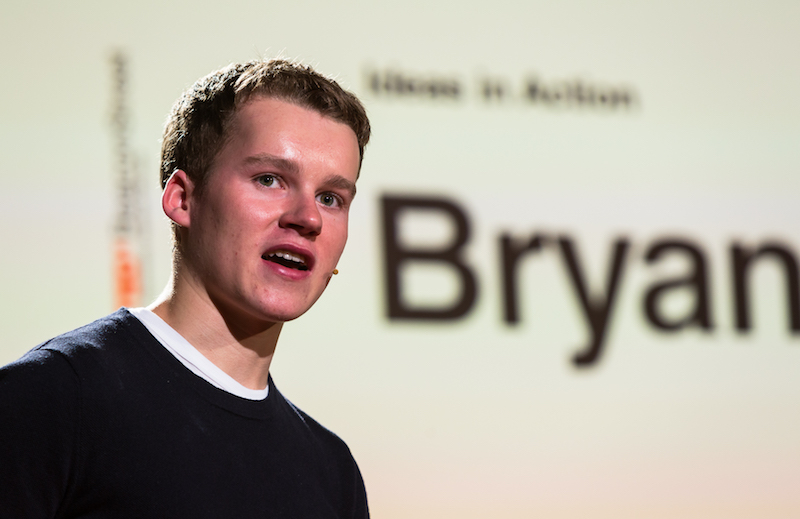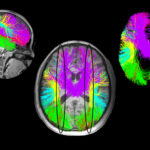Back from the brink: How Boston Children’s saved my life

I was first rushed to Boston Children’s Hospital on my very first night of summer vacation in June 2015. I had been at an eighth-grade graduation party when a brain aneurysm caused by an AVM (arteriovenous malformation) ruptured.
All the blood and swelling in my head generated the worst headache I had ever felt. I threw up, passed out, and my friends called 911. At Boston Children’s Hospital, Dr. Edward Smith was called in just hours before he was scheduled to leave for a medical conference in Germany. He stopped the bleeding and removed the excess blood from my brain. In doing so, he kept me alive at a time when I was only expected to live another 30 minutes.
When I awoke from a coma three weeks later, I was covered in wires, had tubes down my nose and throat, and faced significant cognitive deficits and memory loss. I was half-blind and paralyzed everywhere left of my spinal cord. I couldn’t sit up, couldn’t talk, couldn’t read, and I couldn’t even write my name on a piece of paper. My doctors said I would be lucky to walk again.

Ultimately, my AVM needed to be removed because it placed me at risk of another brain hemorrhage. In early August 2015, after weeks of early-stage rehab with therapists at Boston Children’s, Dr. Smith and Dr. Darren Orbach worked together to remove my complicated AVM. They worked for 14 straight hours – from 7 a.m. to 9 p.m. – and ultimately achieved what one surgical fellow said was, “the closest thing to a miracle I had ever seen in an operating room.”
But in spite of the magic they worked, I still faced years of rehabilitation. After the surgery, I was transferred to a rehabilition hospital, where I underwent a month of arduous physical, occupational, and speech therapy. The rehabilitation was so exhausting that I would often return to my room and sleep for the remainder of the day.
In September 2015, I hobbled up my own driveway with a quad-cane, but my liberation from the hospital was not what I had expected. I was testing at a third-grade reading level and a kindergarten math level. My parents put a baby monitor in my room because I still lacked the ability and independence to even get myself out of bed. My progress was so slow it was almost like watching myself grow. Oftentimes, the only reason I persevered was the understanding that I didn’t have any better options.
I consistently heard that my recovery was going to be a “marathon, not a sprint” – an expression I’m still coming to understand. But while marathons have an end, I sometimes felt like my path toward a full recovery would never end. There were times when I asked myself questions like, “Will I ever again do anything I love?” “Will I ever be as good as the old me? “Will I ever feel successful?”

However, four years later, I am doing much better. I have returned to school full-time to earn highest honors, have given a TEDx Talk, and have raised over $43,000 in an effort to thank Boston Children’s for saving my life. That said, I still face a number of continuing disabilities, and there are many elements of my life I will never regain. But I have worked to share my story and talk to other patients in similar conditions as mine to try to instill a sense of realistic hope.
I will forever be indebted to Boston Children’s and everyone who helped me get to where I am today. I now realize how lucky I was to be in the care of some of the best experts in the world, whom I regard as my “eternal superheroes.” My family has stayed in touch with many of my ICU nurses and physical therapists — we still often get together outside the hospital like a big family. There is something so special about Boston Children’s that, even though it was home to the two most traumatic months of my life, I still derive a sense of hope and joy each time I go back.
Learn more about the Cerebrovascular Surgery and Interventions Center.
Related Posts :
-

Unveiling the hidden impact of moyamoya disease: Brain injury without symptoms
Moyamoya disease — a rare, progressive condition that narrows the brain’s blood vessels — leads to an increased risk of stroke ...
-

What orthopedic trauma surgeons wish more parents knew about lawnmower injuries
Summer is full of delights: lemonade, ice cream, and fresh-cut grass to name a few. Unfortunately, the warmer months can ...
-

Could the falcine sinus hold the key to vein of Galen outcomes?
A Boston Children’s Hospital study uncovers how fetal magnetic resonance imaging (MRI) could be a game-changer in predicting outcomes ...
-

The thalamus: A potential therapeutic target for neurodevelopmental disorders
Years ago, as a neurology resident, Chinfei Chen, MD, PhD, cared for a 20-year-old woman who had experienced a very ...





